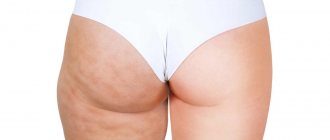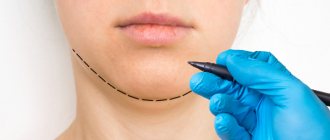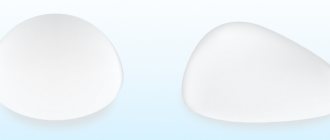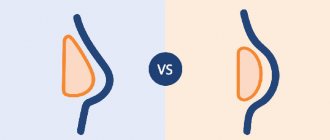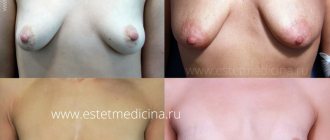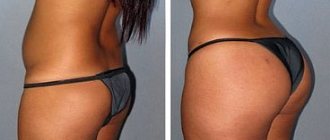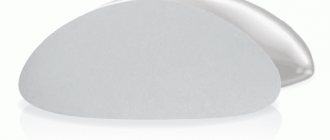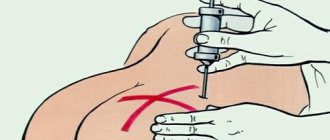This article is devoted to the problem of increasing/decreasing the chin protuberance . If you are interested in the question of how to remove a double chin, go to the article “ HOW TO REMOVE A SECOND CHIN .”
Plastic surgery methods (genioplasty or mentoplasty) are used to reduce or enlarge the chin. Chin surgery can help you not only change the size of your chin bump, but also improve its shape. As a result of this operation, you will get a more proportional and beautiful face.
All photos
CHIN PLASTY – ANTI-AGING EFFECT
After chin augmentation surgery, almost all patients note that their face looks not only more beautiful, but also younger. Everything is very simple! The increased size of the chin protuberance compensates for the missing volume of subcutaneous tissue, thanks to which all folds of the skin are straightened, jowls and wrinkles disappear, and the skin under the chin is tightened. But it is also prevention. Let's reveal a secret - people with a small (sloping) chin age earlier and more noticeably.
Chin plastic surgery (especially augmentation mentoplasty) is popular not only among women, but also among men. After all, it’s hard to imagine a man’s face without a beautiful, strong-willed chin.
Chin surgery is often performed simultaneously with rhinoplasty. If a small chin is adjacent to a large nose (the “parrot profile” effect) or the patient does not like the predatory profile with a hooked nose and a protruding chin, a comprehensive correction can be performed. This operation is called profiloplasty. We write about complex chin and nose surgery here.
Chin augmentation can be performed either with or without an implant (due to rotation of the bony protrusion of the chin). And, of course, Dr. Kudinova can not only enlarge, but also (which is much more difficult!) reduce your chin.
Kudinova Ekaterina Sergeevna
Candidate of Medical Sciences, certificates in plastic and maxillofacial surgery. International expert in face and neck lifts, eyelid surgery, eyebrow surgery, chin surgery, etc.
To learn more
Why is a small chin bad?
Try a little experiment. Take a full-face photo of yourself and mentally divide your face into three parts: the upper one - from the hairline to the eyebrow area, the middle one - from the eyebrow area to the tip of the nose, and the bottom one - from the tip of the nose to the base of the chin.
Now arm yourself with a ruler and see if these parts are equal to each other. Equal? Congratulations – your face has the correct proportions. Not equal? What third violates the harmony of features? There is a very high probability that the lower part of the face is to blame for the occurrence of disproportion.
The basic laws of beautiful facial proportions - the “rule of three thirds” - were formulated by Leonardo Da Vinci.
Therefore, in order to improve your appearance as a whole, it is enough to simply “build up” your chin a little. Is it possible? Maybe. At Platinental we do this every day.
IS CHIN PLASTY RIGHT FOR ME?
Indications for chin correction surgery may include:
- An underdeveloped, sloping chin, creating the effect of a small “bird” face;
- A small chin and age-related changes, as a result of which soft tissues slide down, forming “jowls” and a double chin;
- Too large, protruding chin;
- Wide, heavy lower jaw (“horse-like” face);
- Unattractive or asymmetrical chin shape.
To obtain a comprehensive result, chin surgery can be combined with liposuction and neck lift, as well as rhinoplasty.
Results Before and After CHIN PLASTY View now
CHIN PLASTY. METHODS
The following techniques are most often used for surgical correction of the chin:
Chin augmentation with modern implants . This low-traumatic method is indicated for patients with a small, underdeveloped chin who want to achieve more harmonious facial proportions with a clear lower jaw line.
Chin augmentation with your own bone tissue . Small chin augmentation, in which the surgeon moves part of the mental protuberance forward through an osteotomy. This plastic method is used to correct a sloping chin in both men and women.
Chin reduction (reduction mentoplasty) . Correction of a heavy chin, in which the surgeon works with the bone tissue, achieving the desired proportions. Reducing a long chin immediately changes the face, making it graceful and harmonious.
Alternative (non-surgical) methods are chin contouring with natural hyaluronic acid fillers or lipofilling. These methods are indicated if a slight increase in the chin or minor correction of its shape is required.
The choice of chin plastic surgery technique is carried out after a thorough study of the proportions of the face from various angles and other studies.
How to do more
There are several ways to enlarge a small chin. “The simplest is the introduction of a dense filler,” says Elena Chirikova, “a very convenient way for the patient to understand how much the chin needs to be enlarged and how much its changes change the appearance. The only drawback of this method is its short duration and the need for correction. Another way is to enlarge the chin with a silicone implant.
From my point of view, the most worthy and quite simple to install. The implant can be selected by shape, size, volume - the most suitable for a particular patient - and, if necessary, changes can be made to it with ordinary scissors or a scalpel, cutting off all unnecessary, working like a sculptor.”
To achieve the desired chin shape once and for all, the best option is to contact a plastic surgeon and use the second method. This method of mentoplasty is more complex, but gives a lasting result. Today there are no problems with choosing a polymer implant. The range is so wide that you can choose an option that exactly matches all the anatomical features of a face of any shape. Only a specialist can decide on the choice of implant.
“To understand how your appearance will change, there are several options for “trying on” a new image,” says Elena Karpova. — It is possible to visualize a picture of a simulated changed appearance by enlarging the chin on a computer.
You can make a 3D model of your face using modern technology and experiment with the size of your chin. And another effective way to understand whether you like your look is to inject a filler based on hyaluronic acid. If you don’t like it, the filler will degrade and everything will return to its place.”
HOW IS THE OPERATION FOR SURGICAL CORRECTION OF THE CHIN PERFORMED?
When planning the operation, a thorough comparative analysis of the facial proportions and a comparison of the right and left profiles is carried out. Such an assessment is necessary to ensure that the face after chin surgery looks natural and beautiful from any angle. Then the necessary tests and studies are carried out, including a lateral teleroentgenogram and an orthopantomogram.
Mentoplasty, the price of which varies depending on the chosen surgical technique, is one of the most effective plastic surgery technologies.
Before and After FACE LIFT Results View now
All chin surgeries are performed under general anesthesia and are therefore painless. When performing chin correction surgery, the incision is made in the mouth, in the crease between the lower jaw and lip, so the scar after the operation will not be visible. Chin correction surgery usually takes about 1 hour, but in complex cases, mentoplasty can take longer. If genioplasty is performed in conjunction with other plastic surgeries, such as a facelift or rhinoplasty, the duration of the operation increases to 2-3 hours.
NEW LEVEL
Micrognathia, or jaw hypoplasia, is commonly referred to as an unusually short lower jaw. However, there is no standard or precise definition of this condition. The fact is that when comparing the proportions of the head of an adult and a newborn baby, we will see a very large difference in the ratio of the sizes of the lower jaw. In the last weeks of pregnancy, the fetus is in cramped conditions, its head is usually tilted, its chin is pressed to the chest. This position temporarily inhibits the growth of the chin, which is compensated by the relatively large size of the tongue compared to the tongue of an adult. But the most important thing is that the lower jaw of a newborn at birth is, as it were, at the start of the rapid changes that will occur to it in the next days and weeks with active motor load in the form of breast sucking. That is, the size of a newborn’s chin in most cases is not a fait accompli, but a point of development . With a high probability, a healthy child who receives breastfeeding on demand will sooner or later catch up or surpass his peers. Just like after a while all healthy babies begin to crawl and sit up, some a little earlier, others a little later.
We are talking about the characteristics of healthy children, but for children with genetic diseases, which are characterized by underdevelopment of the lower jaw, breastfeeding has no less therapeutic effect. That is, a breastfeeding consultant in this situation does not so much tell the mother how to adapt to the baby’s characteristics, but rather acts as a coach who helps level out these characteristics.
In clinical practice, the difference in jaw size is considered significant if the lower lip and lower jaw do not reach the upper gum. Sucking the breast on demand provides a good load on the facial muscles, and in breastfeeding children, the size of the jaw, as a rule, normalizes with age. For example, one study proved that in children 5-11 years old who were breastfed for up to 6 months, micrognathia was much less common than in their peers from the control group. (Lus, Garib, Auroca 2006)
Babies with a short jaw often have difficulty sucking at the breast. But not because of insufficient emphasis on the chin, as one might think, but because of the incorrect position of the tongue, which limits muscle movement and creates additional tension. In children with a short jaw, the tongue size is usually completely normal. In order for such a language to fit into a too limited space, the child is forced to resort to “tricks”. Most often, the baby acquires the habit of resting the tip of the tongue on the lower gum, while the root of the tongue is in constant tension, and a characteristic “bridge” appears.
Another option is to curl the tip of the tongue upward. In both cases, constant tension and unnatural position of the muscles lead to motor difficulties and form compensatory movements that complicate the sucking process. The most common is pushing out the nipple when latching on the breast . Instead of pulling the nipple deep into the mouth, the tongue makes the usual pushing movements. Such incoordination of tongue movements can be dealt with quite quickly using a silicone pad. Moreover, nursing mothers who are faced with this manner of latching on their babies usually complain of severe pain in the nipples and cracks. If the mother doesn’t like the idea of using a pad as a training device or the baby refuses to feed in it, finger feeding and tongue smoothing can have a similar effect.
An excellent effect is achieved by the so-called “thrown back” positions at the chest, which allow for a more asymmetrical grip.
If nipple pain continues despite training and special feeding techniques, you can encourage mom to replace several feedings a day with pumping to give her nipples a rest and healing. Time is the best assistant in such a situation. Most babies with a short lower jaw master the art of sucking at the breast by 12 weeks and stop causing pain to their mothers when feeding.
Photo source: https://newborns.stanford.edu/PhotoGallery/Micrognathia1.html and the author's own photo.
Tatyana Kondrashova, “New Level”.
Go to other articles for consultants of the “New Level” project
REHABILITATION AFTER CHIN PLASTY
After the operation, the patient remains in the clinic until the next morning. The chin area is fixed with a special “invisible” plaster (without using a bandage).
Rehabilitation after chin correction takes up to 14 days. At this time, it is necessary to carefully observe a gentle regimen, avoid intense physical activity, and avoid sudden head movements.
In the first days after surgery, patients may experience swelling of the chin and discomfort in the suture area. To reduce unwanted effects and speed up healing, the doctor prescribes special medications, and physical therapy may be prescribed.
What are implants made of?
In addition to silicone implants, there are also bioprostheses (based on the patient’s cartilage tissue). Despite the fact that they are as safe as silicone, and therefore are also often used to enlarge the chin, experts note some nuances that can sometimes arise when using them.
“Of course, silicone implants are ideal for chin augmentation, because they do not affect the resorption of bone tissue,” notes Elena Chirikova.
— Silicone elastomer is a semi-soft material, and when changing such an implant, we see the absence of any resorption in the area of the bony part of the chin. If the implant is made of a hard material (for example, a rib), then the bone part of the chin experiences severe pressure from the bioimplant, which forces it to follow the contour of its posterior (facing the bone) part, and the bone part of the chin is resorbed, that is, it loses its own volume.”
DO YOU NEED THE BEST CHIN PLASTIC SPECIALIST IN MOSCOW?
Plastic and maxillofacial surgeon Ekaterina Sergeevna Kudinova is a candidate of medical sciences, a leading Russian specialist in the field of plastic surgery of the chin, lower jaw and nose.
As a leading researcher at the best Moscow clinical center of otorhinolaryngology, Ekaterina Sergeevna performs complex facial reconstructive surgeries for patients injured in accidents. This unique experience helps her achieve excellent results in relatively simpler aesthetic chin surgery and complex profile correction surgeries.
Delicacy, tact and the ability to empathize allow the doctor to gain trust and find mutual understanding with each patient.
You can make an appointment for a consultation with Ekaterina Sergeevna Kudinova by calling 1 or. You can also leave a request through the online consultation form on the website.
